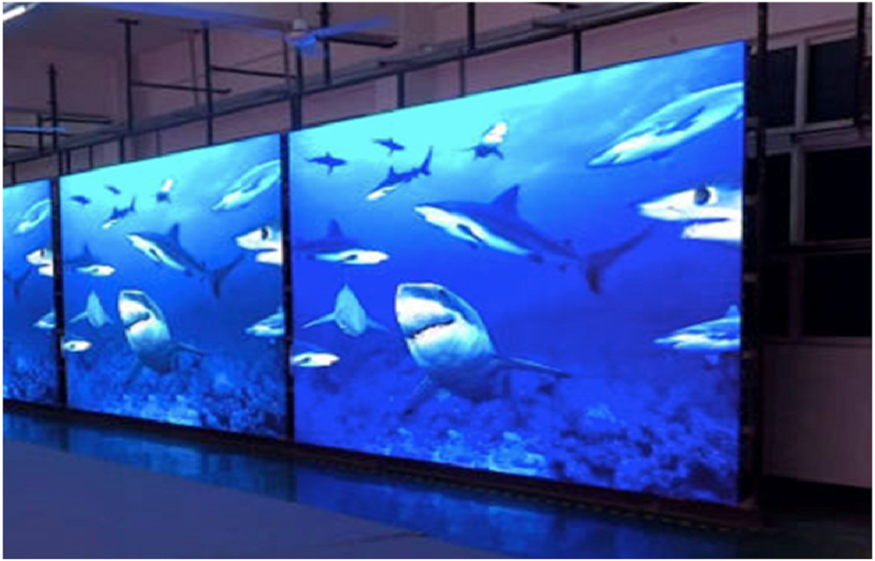If you read this article, you have likely considered making indoor LED video walls yourself. Undoubtedly, this will be the hottest thing on the market, but you need to act quickly because everyone will watch videos on it in the future. So, what do you need to do to make one? We will show you how simple it is and give you some tips.
Build your Indoor LED video wall!
Now that you have your materials, it’s time to build your indoor LED video wall.
Please remove all the panels from their boxes and lay them flat with the front facing up. (It’s okay if they’re not perfectly straight.)
Carefully peel off all of the protective films from each panel until there is no more left on any part of any panel. You may need a razor blade or X-ACTO knife for this task, but be careful not to damage any part of your screen! The adhesive backing can be tricky; here are some tips:
Use gentle pressure when removing pieces of tape so as not to tear or stretch them too much; if necessary, use something like an eraser end or butter knife handle underneath where needed instead of just pulling directly upward from above without supporting anything else first because these surfaces tend toward being slippery due – literally – “stickiness” issues whenever possible?
Choosing the Right Size for Your LED Video Wall
The first step to building an LED video wall is choosing the right size for your needs. This can be tricky because many factors go into determining which size will work best for you. To help you decide, we’ve put together this quick guide:
Choose the size based on your room. If you’re putting it in a large room or auditorium, chances are good that one large panel will work out just fine–but if it is smaller than 50 square feet (or so), it might not fill up enough space without looking empty or awkward.
Choose the number of people watching at once and consider where they’ll be sitting relative to each other when deciding how many panels they should see at once. If there’s no way around having multiple screens showing different things simultaneously (for example), consider placing two smaller ones side by side rather than one larger one farther away from anyone sitting behind them!
Decide on a material for your Indoor LED video wall!
When deciding on the material for your indoor LED video wall, there are a few factors to consider. First, you want something lightweight and durable enough to withstand regular use but also affordable. Here are some popular options:
Wood is one of the most common materials used in DIY furniture projects because it’s easy to work with and can be found at most hardware stores. However, wood doesn’t offer much resistance against wear, moisture, or heat damage (if you plan to install this indoors). It also tends not last as long as other materials like metal or plastic due to its natural tendency towards decay over time (though this varies depending on species).
Steel is strong, malleable, and heavy, so make sure any structure you build can hold its weight! Steel is suitable for many different shapes, including thin sheets, and is easily accessible to anyone interested in making their own DIY LED video wall this way.
The software options are available for an indoor LED video wall!
You can choose from various software options for your indoor LED video wall. The most popular and widely used are open-source, free, paid, and proprietary.
The first option is open-source software. That means everyone can use it, and anyone can use it without paying any fees or royalties. It can also be modified and then shared with others through various channels. Users can download these modified app versions from these channels for free at no additional cost unless they want to add some advanced features. Certain other content is downloaded to their device.
The display technology behind indoor LED video walls!
LEDs are used in various applications, including indoor LED video walls. An indoor LED video wall is made up of individual LEDs that are arranged in a matrix and controlled by a controller. The controller can be external (like an iPad) or built into the monitor, like on an Apple Thunderbolt Display.
Indoor LED video walls are often behind glass panels, protecting them from damage while allowing light to pass through so you can see what’s on the screen. They are usually installed on outdoor buildings and other structures, such as billboards or signs. They are constructed with protective covers made of plastic or metal so they cannot be damaged.
Final
As you can see, creating an indoor LED video wall is not a difficult task. According to the above method, you can implement it step by step to make your indoor LED video wall.

